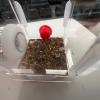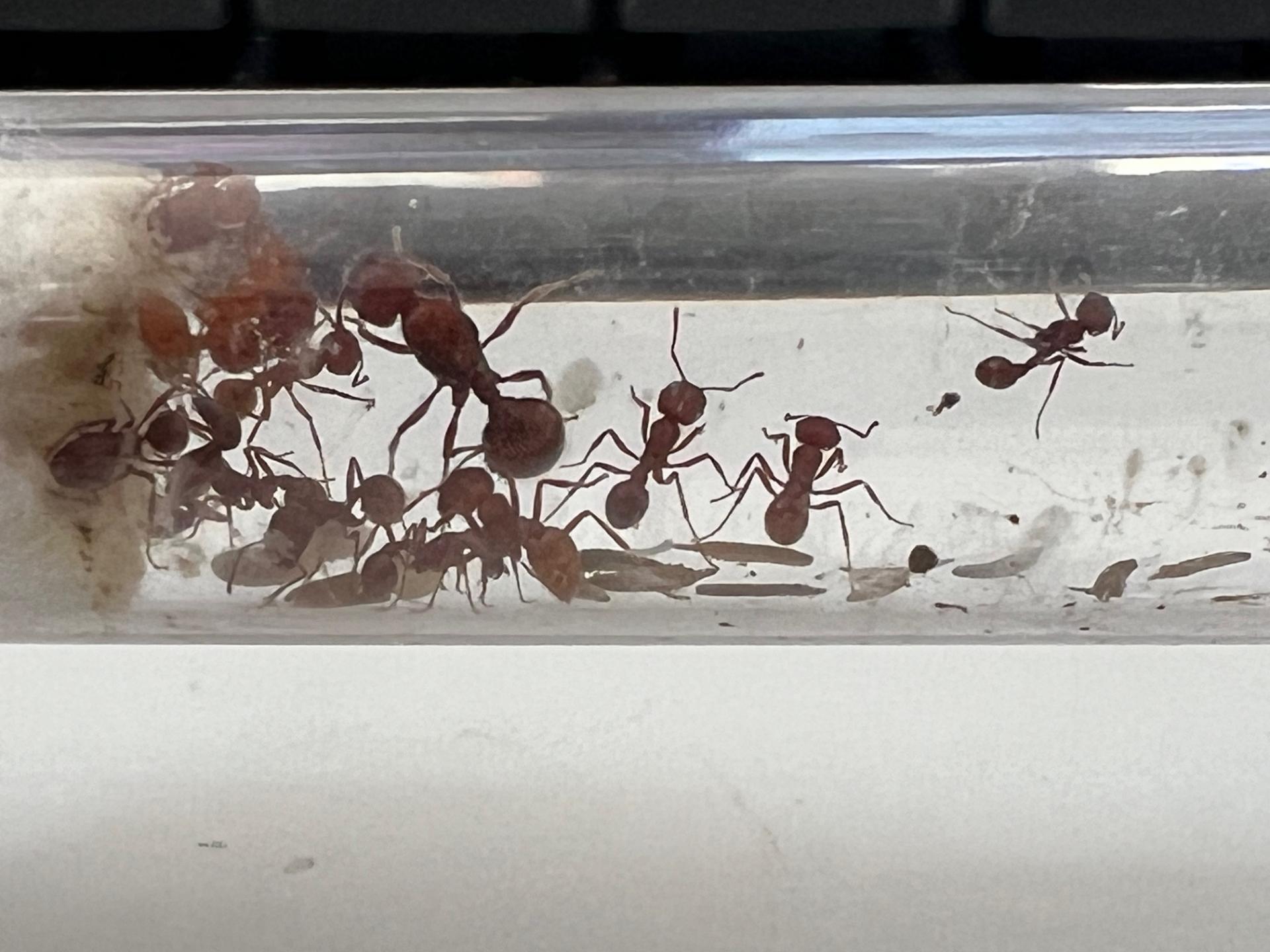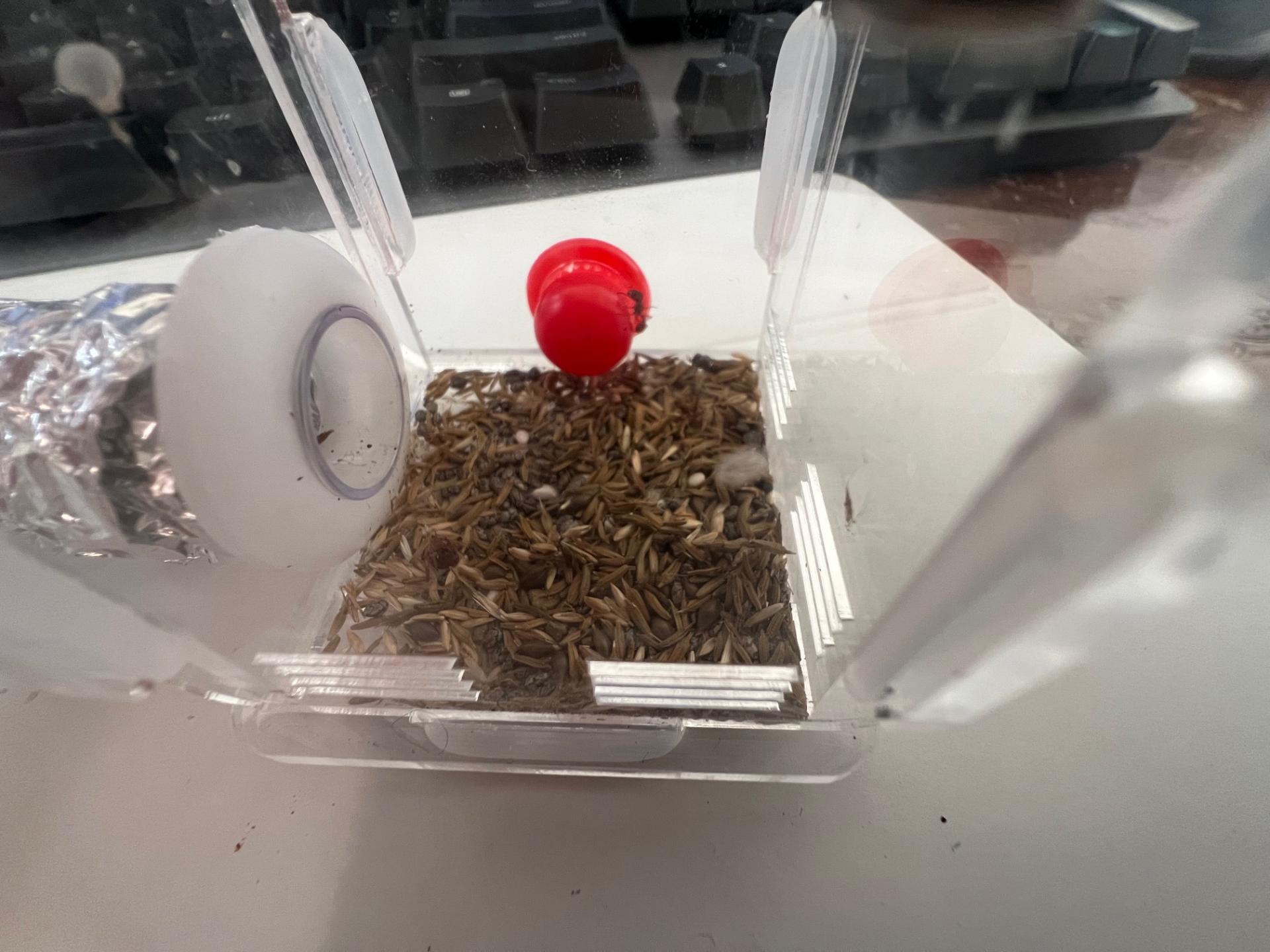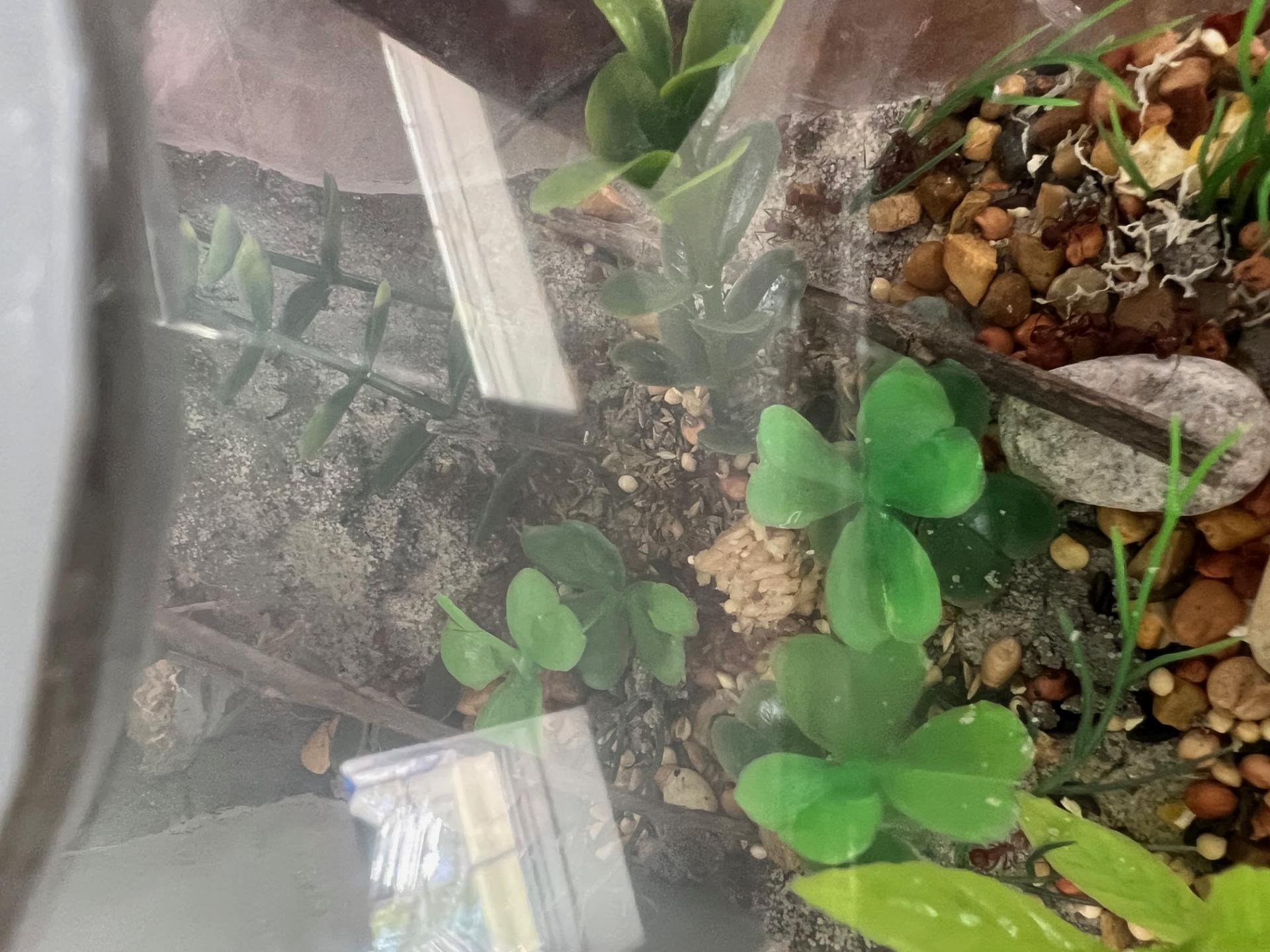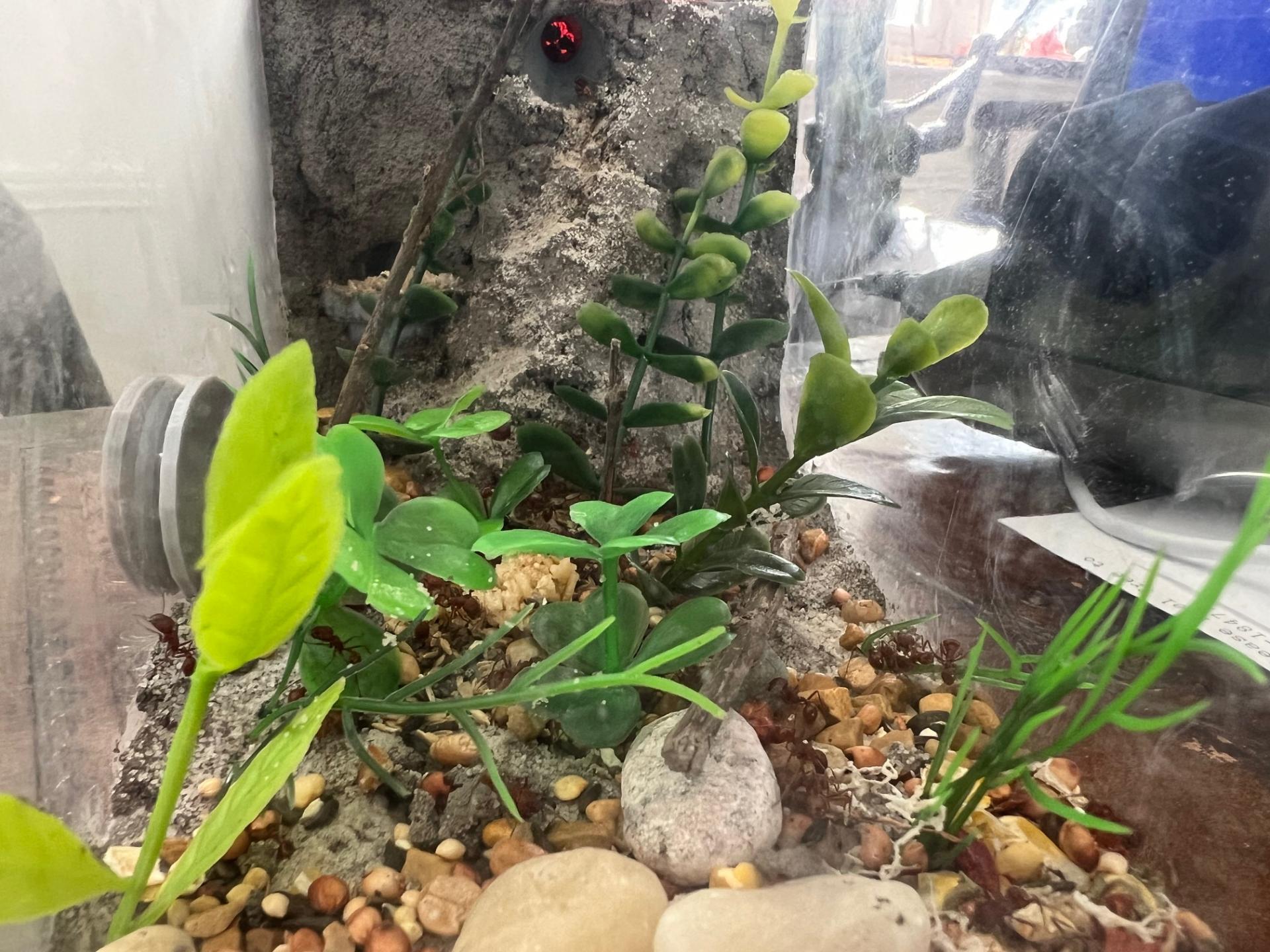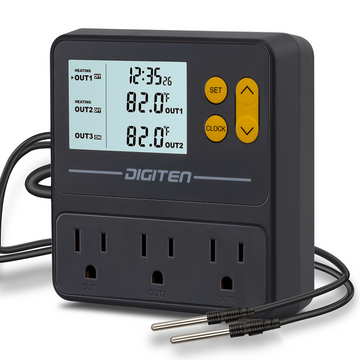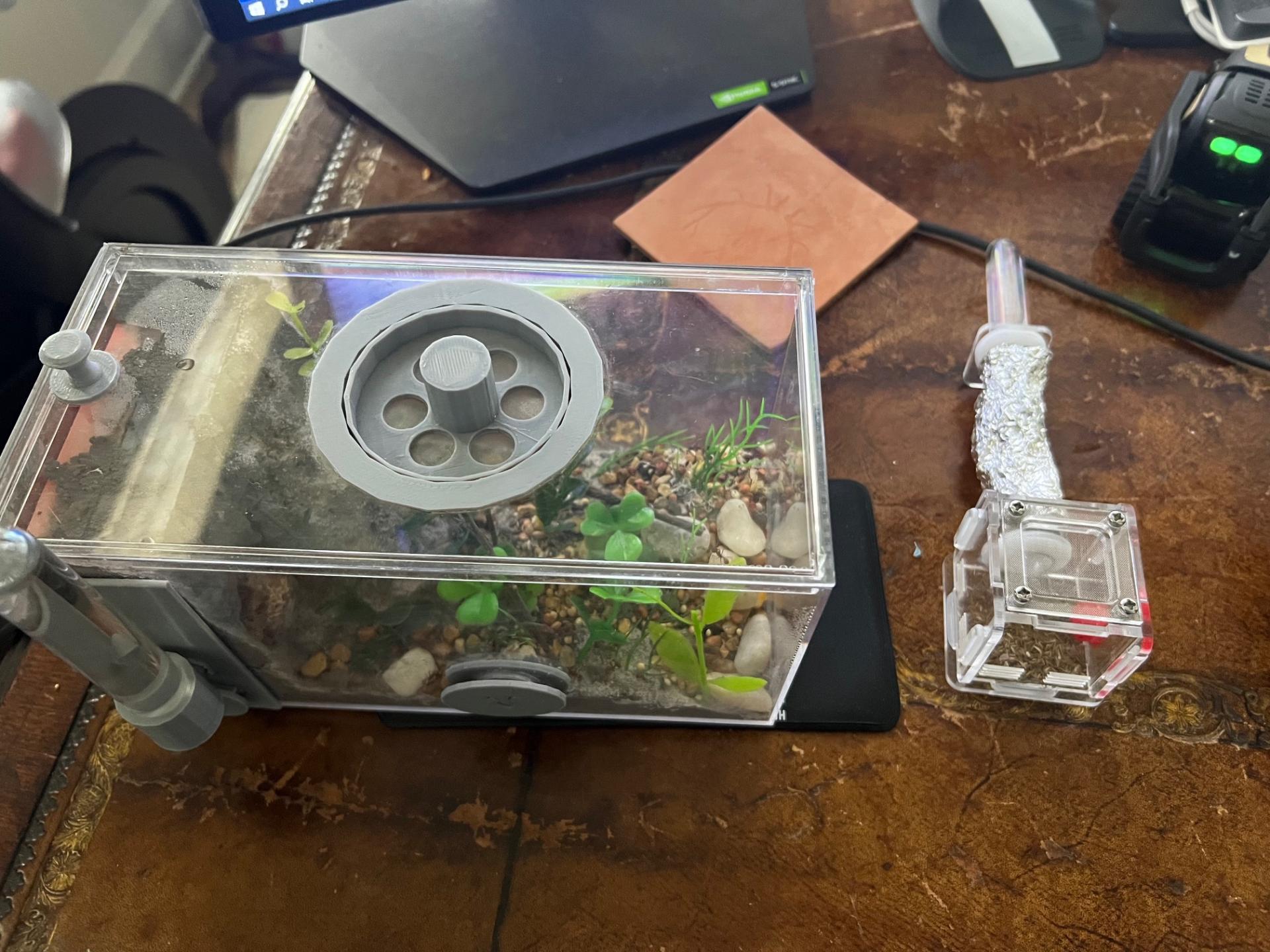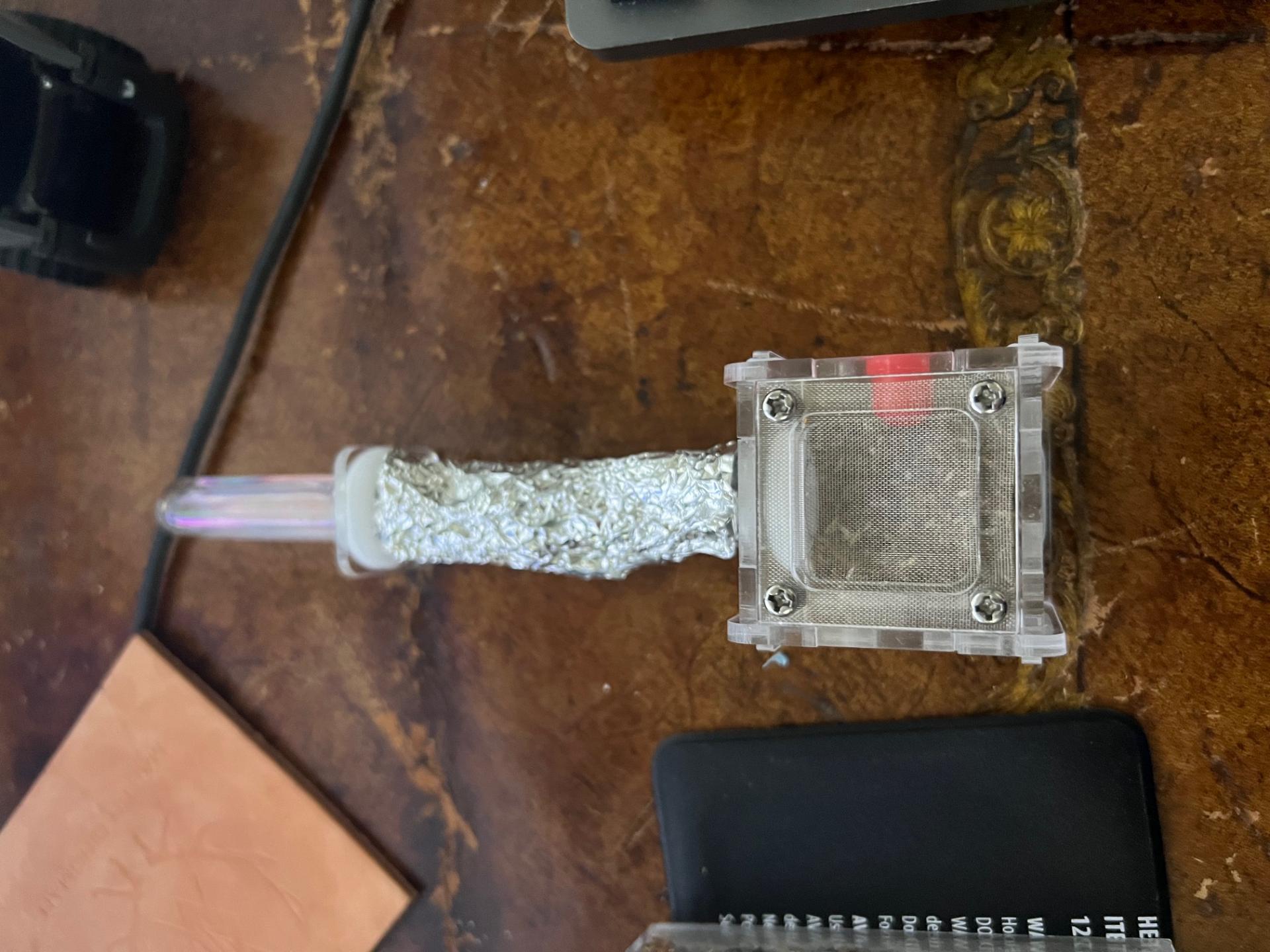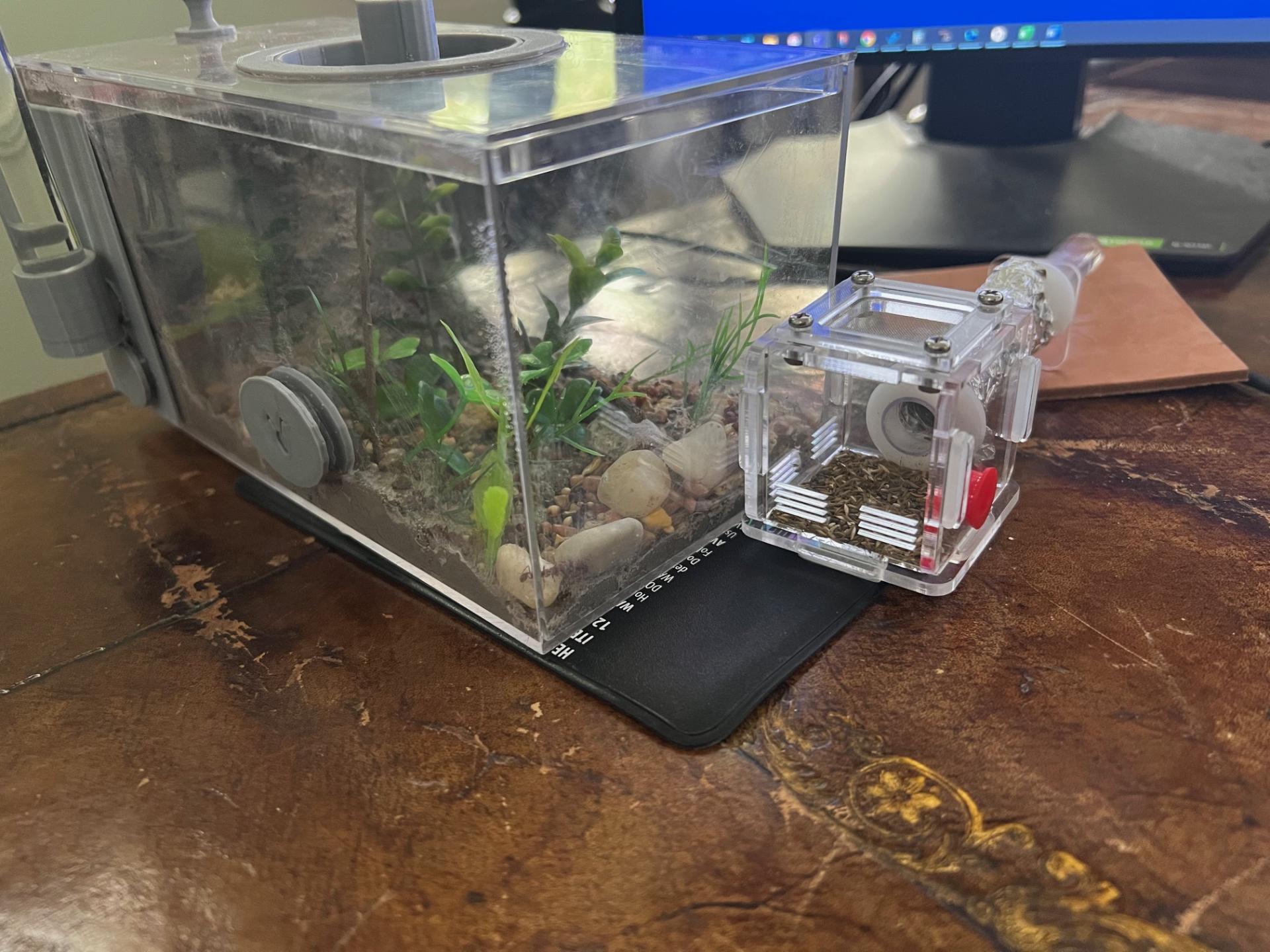Thanks for the trees! I'm hoping the uncle milton ants pass away in the not so distant future so I can clean the big formicarium out and move the new colony in.
Should I keep my small colony in the dark? And w or w out heating of the outworld?
I had mine in a open side THA mini hearth without darkening the glass around the the 20 mark. I moved them into a top down view nest at around 75. They are 200-300 now still in top down view with near by overhead lighting on the outworlds and no special shading/red filter for their nests.
I notice mine get used to whatever light conditions fairly quickly. Dark and they will freak out when suddenly lit. Lit all the time and they seem to not care. When my daytime light timers goes on, the ones that overnighted in the outworlds just slow shuffle back to the nest, but no one freak outs.
I'd say a mat near by or under that nice little screen top outworld, but i'd not directly mat heat a test tube colony i think. Probably get a lot of condensation and they don't like exposed//open water too much. But i'd be trying to keep their general nest temp around the 80f zone
Mine like heat, but more importantly a heat gradient. The late stage larvae will be kept where it is hottest and early stage where it is cooler. And humidity is important for them. Careful not to place any heat sources too clsoe to any water/humidity sources. It will over saturate the air with humidity and condensation will form on everything. Even so if the humidity is high and the viewing glass cold enough, it will bring on condensation. Being able to keep a warmer ambient temp outside the glass, or applying heat directly to the glass will help prevent condensation from forming. But not if it is over saturated, then it just forms on everything in the nest no matter what.
My nest internal temp over the last year was averaging about 84f. thermostat on at 83 off at 85. With heat applied mainly just on one side A(and glass to keep off condensation) , with the internal temp probe near that point(not touching anything, taking air temps). So the nest is cooler as you move to the other side of it away from the heat source. Now I have two nests connected and two heat cables. I run one at the 83-85 and the other at 78-80. I notice they really split up the brood pile when offered this much gradient and all of it is on top of water towers(highest humidity zone in the nest).
A heat cable would let you better control where and how much heat is applied. And of course thermostat control will let you be lazy about it.
Edited by Full_Frontal_Yeti, January 3 2024 - 6:53 PM.


